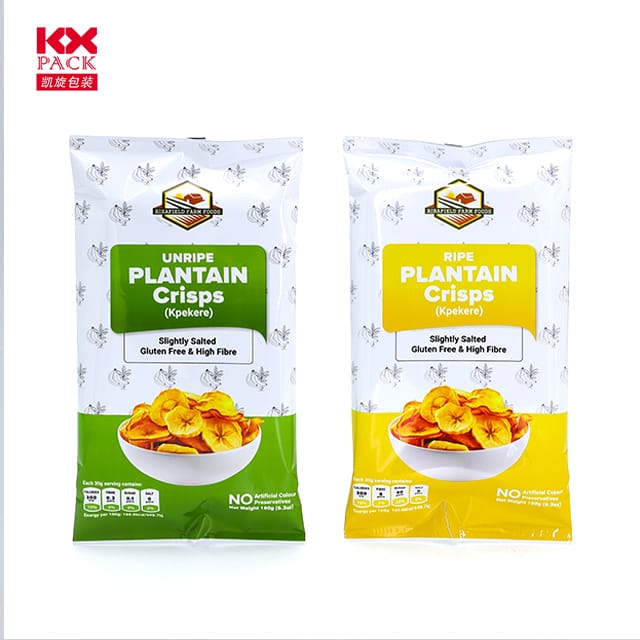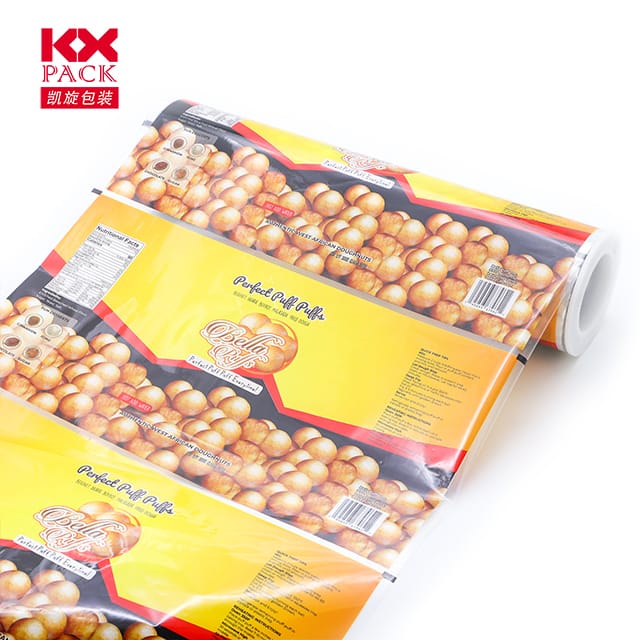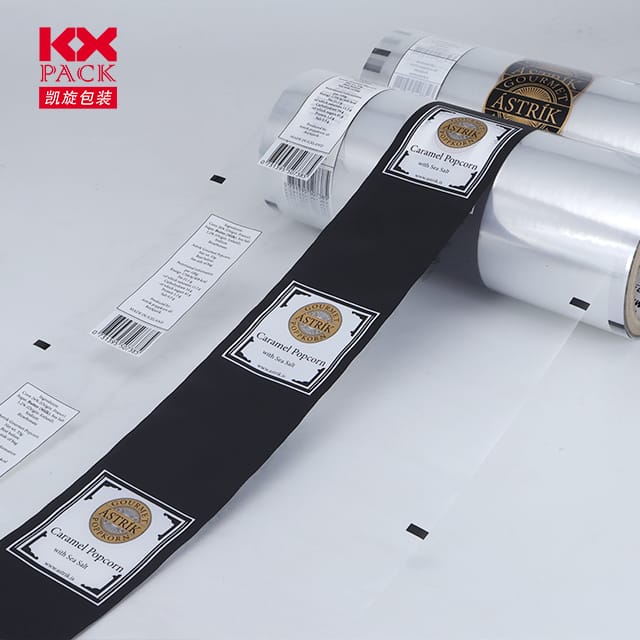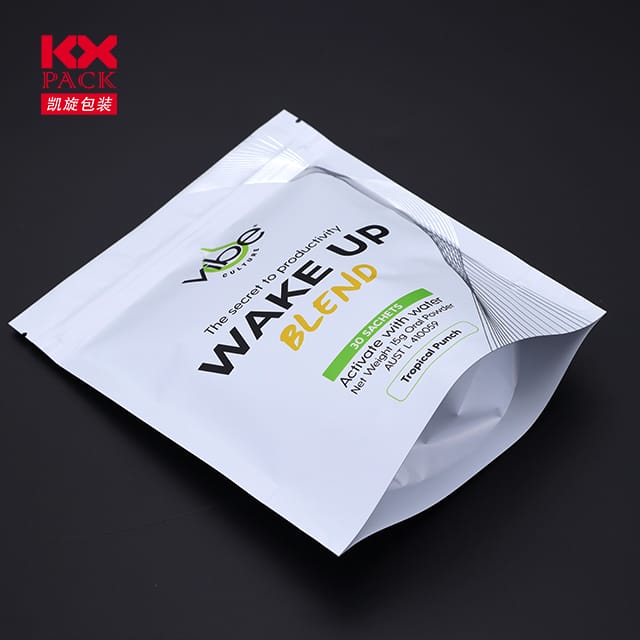Sự phát triển của phim bao bì in: Làm thế nào sự đổi mới đang định hình lại sự trình bày sản phẩm
Phim bao bì in
Trong bối cảnh bán lẻ siêu cạnh tranh ngày nay, Một bao bì sản phẩm không còn chỉ là một lớp vỏ bảo vệ, nó là một công cụ tiếp thị năng động kết nối bản sắc thương hiệu với trải nghiệm của người tiêu dùng. Trong số vô số giải pháp đóng gói, màng bao bì in đã nổi lên như một người thay đổi cuộc chơi, Kết hợp chức năng với hình ảnh có tác động cao với người mua sắm quyến rũ và chuỗi cung ứng hợp lý. Hãy cùng khám phá xem vật liệu đa năng này đang phát triển như thế nào để đáp ứng nhu cầu hiện đại.
1. Ngoài thẩm mỹ: Vai trò nhiều mặt của phim in
Phim bao bì in được thiết kế để làm được nhiều việc hơn là chỉ hiển thị logo hoặc đồ họa. Chúng phục vụ như một bức tranh để kể chuyện, tuân thủ quy định, và thậm chí cả sự tham gia của người tiêu dùng thông qua công nghệ thông minh. Ví dụ:
- Sự khác biệt hóa thương hiệu: Ở những lối đi đông đúc, sôi động, in độ nét cao trên phim như polypropylene (PP) hoặc polyetylen (Thể dục) giúp sản phẩm nổi bật. Các công ty đồ uống sử dụng ống co có đồ họa 360 độ để tạo ra các gói có sẵn trên kệ, trong khi các thương hiệu mỹ phẩm tận dụng mực kim loại để mang lại cảm giác cao cấp.
- Minh bạch về quy định: Phim in có thông tin dinh dưỡng, hướng dẫn sử dụng, hoặc cảnh báo an toàn đảm bảo tuân thủ mà không cần nhãn bổ sung, giảm chi phí và lãng phí. Điều này rất quan trọng trong các ngành công nghiệp như dược phẩm và thực phẩm, nơi giao tiếp rõ ràng là không thể thương lượng.
- Tín hiệu bền vững: Với nhựa sinh học và màng tái chế đang thu hút được sự chú ý, thiết kế in có thể làm nổi bật thông tin xác thực sinh thái (VÍ DỤ., “Có thể tái chế 100%”) để thu hút người mua có ý thức về môi trường.
2. Công nghệ đằng sau bản in: Độ chính xác và hiệu quả
Những tiến bộ trong kỹ thuật in ấn đã cách mạng hóa cách các thương hiệu áp dụng thiết kế vào phim:
- In kỹ thuật số: Máy ép HP Indigo hoặc Xeikon cho phép in theo yêu cầu, in ngắn hạn với thời gian thiết lập tối thiểu, lý tưởng cho các sản phẩm phiên bản giới hạn hoặc các chiến dịch khu vực. Tính linh hoạt này làm giảm chi phí tồn kho và cho phép lặp lại thiết kế nhanh chóng.
- In Flexo: Một sự lựa chọn hiệu quả về mặt chi phí cho khối lượng lớn, flexo sử dụng con lăn anilox và tấm photopolymer để mang lại sự nhất quán, in tốc độ cao. Những đổi mới như mực không dung môi nâng cao hơn nữa tính bền vững bằng cách loại bỏ các hợp chất hữu cơ dễ bay hơi (VOC).
- Tích hợp bao bì thông minh: Phim in hiện nay đã tích hợp mã QR, Thẻ NFC, hoặc mực nhạy cảm với nhiệt độ, chuyển đổi bao bì thành các điểm tiếp xúc tương tác. Ví dụ, túi cà phê có thể hiển thị chỉ báo độ tươi và thay đổi màu sắc theo thời gian.(Phim bao bì in)
3. Khoa học vật liệu: Sức mạnh đáp ứng sự bền vững
Bản thân các loại màng nền đang được phát triển để cân bằng độ bền với trách nhiệm với môi trường:
- Cấu trúc nhiều lớp: Phim composite kết hợp các lớp rào cản (VÍ DỤ., EVOH cho khả năng chống oxy), lớp keo (như PE để hàn nhiệt), và in các bề mặt thành một, gói hiệu suất cao. Điều này rất quan trọng đối với hàng dễ hư hỏng hoặc chất lỏng.
- Tùy chọn phân hủy sinh học: Màng làm từ axit polylactic (PLA) hoặc hỗn hợp tinh bột mang lại khả năng phân hủy, mặc dù chúng thường yêu cầu các cơ sở xử lý chuyên dụng. Các thương hiệu đang hợp tác với các công ty tái chế để cải thiện việc quản lý cuối vòng đời.
- Giảm nhẹ: Màng mỏng hơn (VÍ DỤ., 15-BOPET micron) giảm sử dụng vật liệu mà không ảnh hưởng đến sức mạnh, cắt giảm khí thải và chi phí vận chuyển.
4. Ứng dụng trong các ngành công nghiệp
Phim bao bì in phục vụ cho nhiều lĩnh vực khác nhau, mỗi người có nhu cầu riêng:
- Đồ ăn & nước giải khát: Màng co lại bảo vệ nhiều gói chai hoặc lon, trong khi các lớp màng mỏng có rào cản cao kéo dài thời hạn sử dụng cho đồ ăn nhẹ và pho mát.
- Chăm sóc cá nhân: Ống và túi đựng sữa dưỡng hoặc dầu gội sử dụng màng in có bề mặt mềm mại mang lại cảm giác sang trọng.
- hậu cần: Màng bó chịu lực cao giúp ổn định pallet chứa củi hoặc các bộ phận công nghiệp, thay thế phương pháp đóng đai truyền thống.
- Thương mại điện tử: Phim chống giả in holographic bảo vệ hàng hóa có giá trị cao trong quá trình vận chuyển, trong khi dây kéo có thể khóa lại tăng cường sự tiện lợi.
5. tương lai: Tính tuần hoàn và kết nối
Nhìn về phía trước, màng bao bì in sẽ ngày càng phù hợp với các nguyên tắc kinh tế tuần hoàn:
- Khả năng tái chế theo thiết kế: Các thương hiệu đang áp dụng cấu trúc đơn vật liệu (VÍ DỤ., túi toàn PE) để đơn giản hóa các luồng tái chế. Những cải tiến như đường xé được khắc bằng laze cũng cải thiện khả năng tái chế dễ dàng.(Phim bao bì in)
- Tích hợp chuỗi khối: Phim in có thể sớm có các mã hỗ trợ blockchain để theo dõi hành trình của sản phẩm từ nhà máy đến kệ hàng, chống gian lận và tăng cường tính minh bạch.
- Sản xuất hiệu quả năng lượng: Các nhà máy in chạy bằng năng lượng mặt trời và hệ thống kiểm soát chất lượng do AI điều khiển đang giảm lượng khí thải carbon trong sản xuất phim.
Phần kết luận: Bức tranh cho sự đổi mới
Phim bao bì in không còn là thành phần tĩnh nữa mà là giao diện động giữa thương hiệu và người tiêu dùng. Như in kỹ thuật số, công nghệ thông minh, và vật liệu bền vững hội tụ, các khả năng sáng tạo, chức năng, và bao bì thân thiện với môi trường đang mở rộng theo cấp số nhân. Dành cho các doanh nghiệp muốn đi trước, đầu tư vào phim in không chỉ là về thẩm mỹ; đó là một động thái chiến lược để nâng cao sức hấp dẫn của kệ, hiệu quả hoạt động, và quản lý môi trường.
Sẵn sàng khám phá cách Phim bao bì in có thể nâng cao thương hiệu của bạn? Đi sâu vào các xu hướng mới nhất trong khoa học vật liệu, công nghệ in ấn, và thiết kế tuần hoàn để mở ra những cơ hội mới trong 2025 Và hơn thế nữa. 🌍✨






